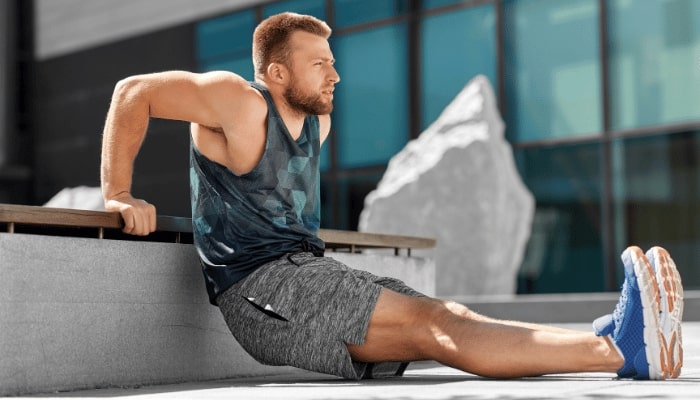
Calisthenics is a form of exercise that involves using only one’s body weight for resistance. This type of exercise is growing in popularity due to its versatility and accessibility, as it does not require any equipment or gym membership.
The back muscles are an essential part of the body and play a crucial role in maintaining proper posture and preventing injury. It is essential to exercise the back regularly to strengthen and improve its function.
The purpose of this blog post is to outline the various calisthenics back exercises and provide information on their benefits, proper execution, and tips for avoiding common mistakes. The post is aimed at providing readers with a comprehensive guide to calisthenics back exercises, helping them to build a stronger and healthier back.

Types of Calisthenics Back Exercises
Calisthenics back exercises target various muscle groups in the back, including the upper back, lower back, and lats, to increase strength and prevent injury. These exercises include pull-ups, chin-ups, inverted rows, and Superman holds, to name a few.
- Pull-Ups: This exercise is performed by hanging from a bar and pulling the body up until the chin reaches the bar. Pull-ups target the lats, the muscles in the back responsible for bringing the arms towards the torso.
- Chin-Ups: Similar to pull-ups, chin-ups involve pulling the body up towards the bar but with a palms-facing-you grip. This exercise places more emphasis on the biceps and can be a good alternative for those who find pull-ups challenging.
- Dips: Dips are a great exercise for the triceps and shoulders, but they also work the back muscles. The exercise is performed by holding onto parallel bars and lowering the body until the arms form a 90-degree angle.
- Push-Ups: While primarily a chest exercise, push-ups also engage the back muscles. The exercise is performed by placing the hands on the ground and lowering the body until the chest touches the ground.
- Handstand Push-Ups: This exercise involves performing a push-up in a handstand position. Handstand push-ups target the shoulders, triceps, and back muscles, strengthening and improving overall upper body strengths.
- Inverted Rows: Inverted rows are performed by lying on the back and pulling the body up towards a bar. This exercise targets the upper and lower back muscles, as well as the biceps.
These are just a few examples of the many calisthenics back exercises that can be incorporated into a workout routine. The variety of exercises allows for a full-body workout and helps to prevent boredom and plateauing.
Benefits of Calisthenics Back Exercises
Calisthenics back exercises offer numerous benefits. Regular practice of these exercises can also help to prevent chronic back pain, improve posture and balance, and boost overall physical fitness.
- Improved Posture: Regularly exercising the back muscles can help to improve posture by strengthening the muscles responsible for holding the spine in proper alignment.
- Strengthening of the Upper and Lower Back Muscles: Calisthenics back exercises target the various muscle groups in the back, helping to increase overall strength and preventing injury.
- Reduced Risk of Injury: By strengthening the back muscles, calisthenics back exercises can help to reduce the risk of injury, particularly in the neck, shoulders, and lower back.
- Increased Flexibility: The back muscles play a critical role in overall body movement and flexibility. Incorporating calisthenics back exercises into a workout routine can help to improve overall flexibility and range of motion.
- Better Body Control: The back muscles are essential for proper body control, balance, and coordination. Regular exercise can help to improve these skills and prevent falls and injuries.
In addition to the physical benefits, calisthenics is also a cost-effective and convenient way to stay in shape, making it an excellent option for individuals of all fitness levels.

How to do Calisthenics Back Exercises Correctly
By following proper form and technique, and avoiding over-training, individuals can safely and effectively perform calisthenics back exercises to achieve their desired results.
- Proper Form: To ensure that calisthenics back exercises are performed correctly, it is important to maintain proper form throughout the exercise. This includes keeping the spine in a neutral position, avoiding excessive arching or rounding of the back, and keeping the head in line with the spine.
- Tips for Proper Execution: To get the most out of calisthenics back exercises, it is essential to engage the proper muscle groups. This can be done by focusing on the muscle being worked, squeezing the muscles at the top of the movement, and controlling the descent to prevent injury.
- Common Mistakes to Avoid: Some common mistakes when performing calisthenics back exercises include using momentum instead of muscle strength, swinging the body, and neglecting to engage the core muscles. It is also important to avoid over-training, as this can lead to injury and fatigue.
By following these tips and avoiding common mistakes, individuals can ensure that their calisthenics back exercises are performed correctly and effectively.
Final thoughts
In conclusion, calisthenics back exercises are a great way to strengthen the back muscles and improve overall posture, flexibility, and body control. With a variety of exercises to choose from, individuals can find a workout that is right for them and prevent boredom and plateauing. By following proper form and technique, and avoiding common mistakes, individuals can safely and effectively perform calisthenics back exercises to achieve their desired results. Regular exercise is essential for maintaining a healthy and strong back, so why not give calisthenics a try today?
References
- American Council on Exercise. (2021). Calisthenics: What It Is and How to Do It. Retrieved from https://www.acefitness.org/education-and-resources/lifestyle/blog/7307/calisthenics-what-it-is-and-how-to-do-it
- Bodybuilding.com. (2021). The Ultimate Guide to Calisthenics. Retrieved from https://www.bodybuilding.com/content/the-ultimate-guide-to-calisthenics.html
- Mayo Clinic. (2021). Exercise: 7 benefits of regular physical activity. Retrieved from https://www.mayoclinic.org/healthy-lifestyle/fitness/in-depth/exercise/art-20048389
- National Institute on Aging. (2021). Exercise and Physical Activity: Your Everyday Guide from the National Institute on Aging. Retrieved from https://www.nia.nih.gov/health/exercise-physical-activity
- Harvard Health Publishing. (2021). The benefits of calisthenics. Retrieved from https://www.health.harvard.edu/blog/the-benefits-of-calisthenics-2021012619465

Lifebing is driven by an unrelenting passion for promoting health and well-being, our team is wholly committed to curating exceptional content and immersive experiences.
